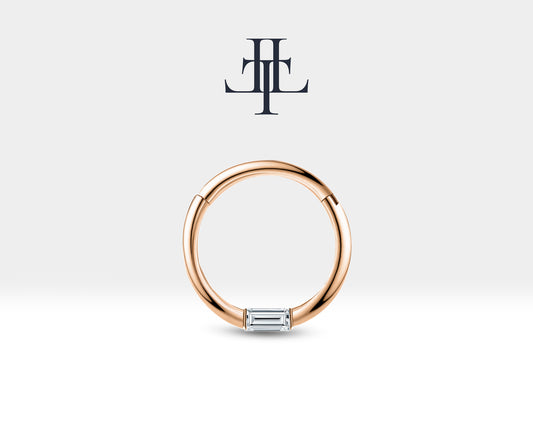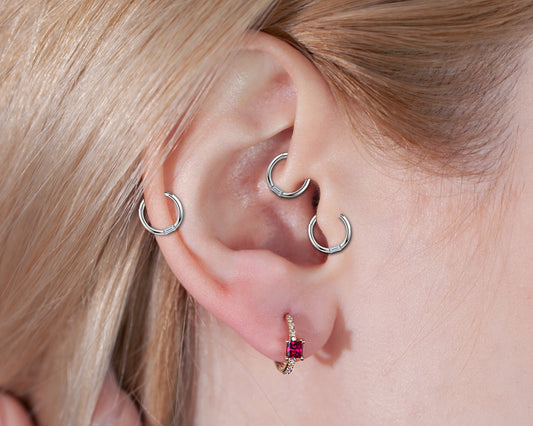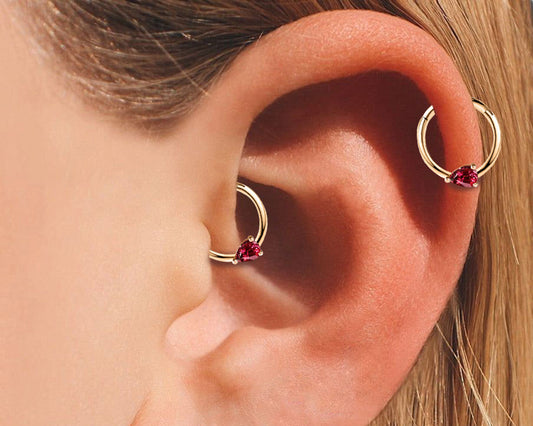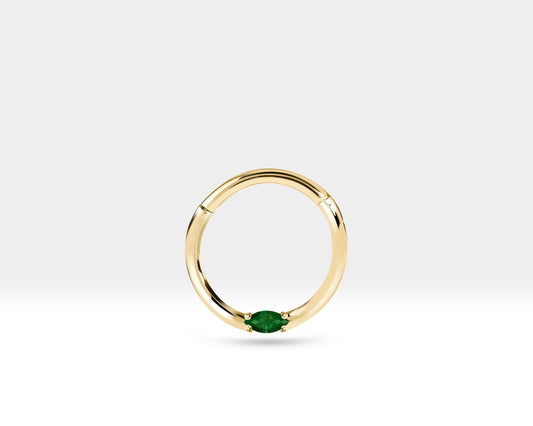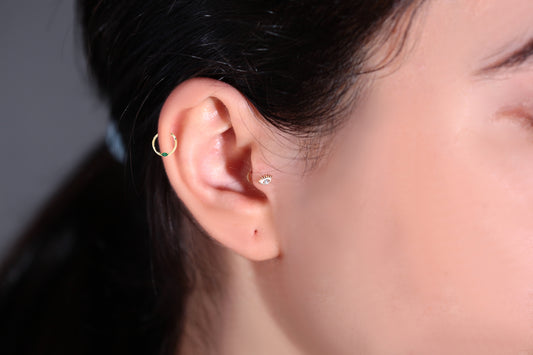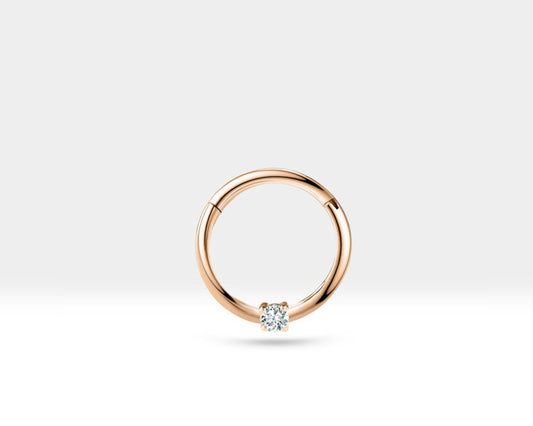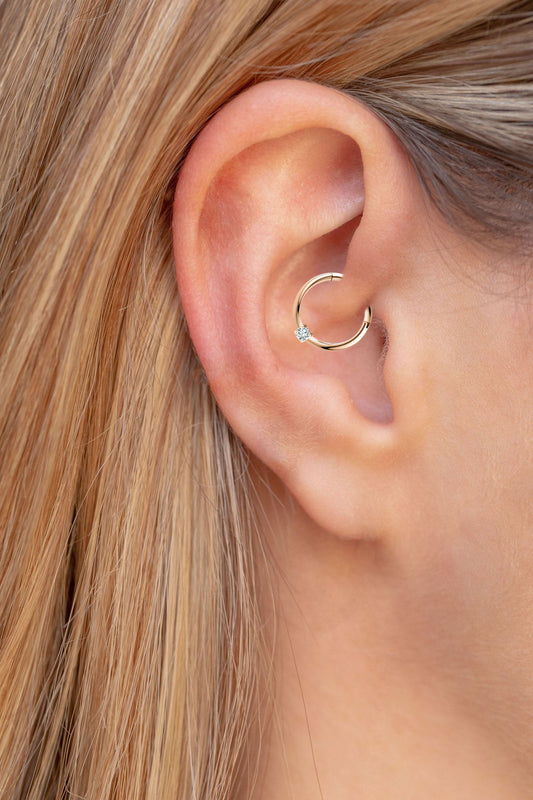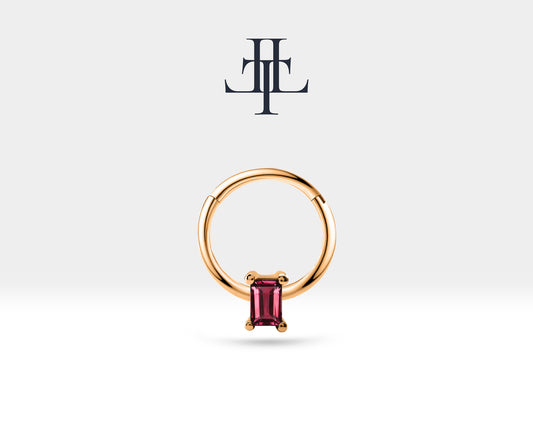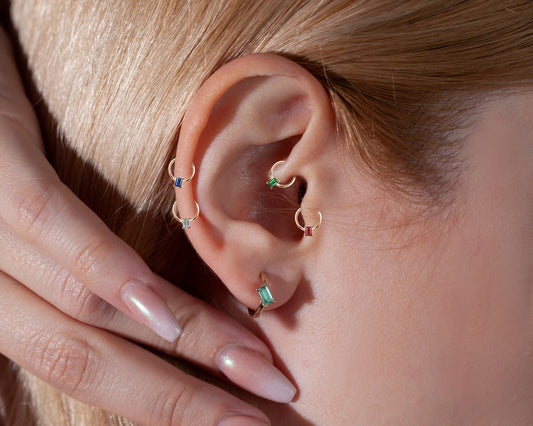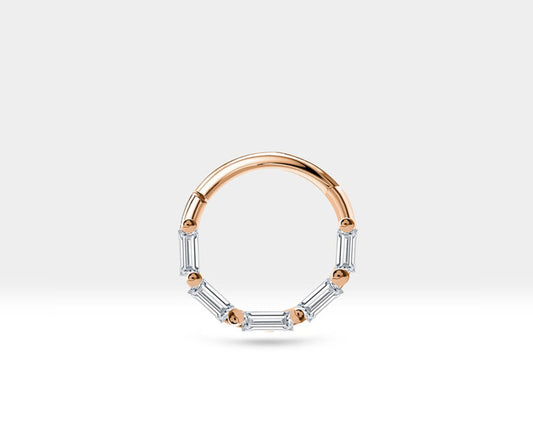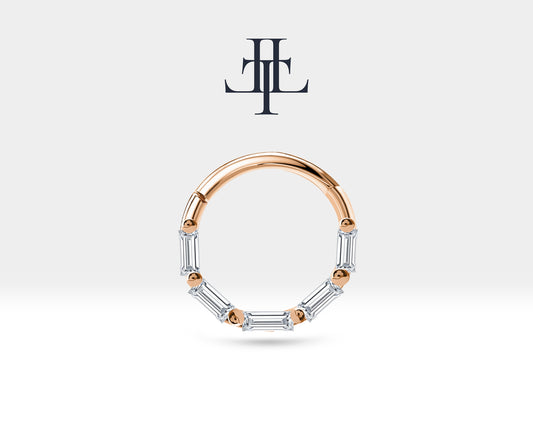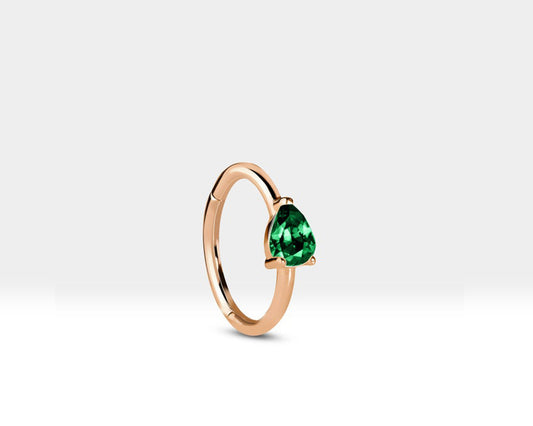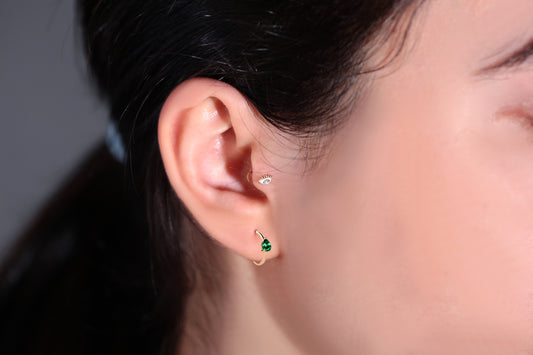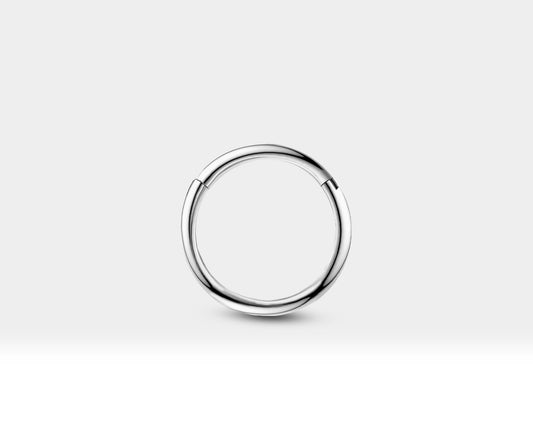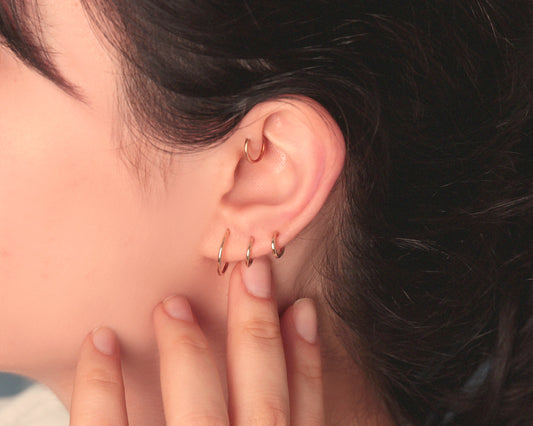Emeralds are formed deep in the earth, in the cracks and crevices of mineral rich rocks such as granite. As the rocks heat up, certain minerals seep out cracks creating a perfect place for gemstones to form and grow.
Emeralds receive their color from the presence of chromium and sometimes iron and vanadium, and the color of emeralds can be correlated to their source of origin. For example, colombian emeralds tend to be a leafy, dark green while Zambian emeralds are often green with a tinge of bluishness.
The emerald is the most famous and recognizable member of the beryl family. It is the quintessential green gemstone and has been used since antiquity.
Throughout history, emeralds were classed as one of the 5 cardinal gemstones, which were considered superior to all other stones. Even today, this green gem is highly sought after, and no jewelry collection is truly complete without an emerald.
If you’re looking to purchase an emerald, whether loose or set in jewelry, there are several factors to consider to avoid getting ripped off. Let’s take a look at what you need to know before you buy an emerald.
How to Buy Emerald Gemstone
Tip : 1 Choosing Emerald Color
It goes without saying that color is the most important feature of an emerald. After all, the very word emerald is synonymous with green and if it’s not green, it’s not an emerald. Unlike many other gemstones such as emeralds and diamonds, emeralds come only in the color green. Emeralds can come in a range of greens, from vivid and vibrant to pale and limp.
When evaluating the color of an emerald, there are three main things we must take into consideration: hue, tone and saturation.
Emerald HueHue refers to the primary and secondary colors of the gemstone which, in the case of emeralds, will always be green with possible secondary colors of yellow or blue. Over 70% of emeralds on the market come from Colombia, which typically produce bluish green emeralds.
Emerald ToneThe tone refers to how light or dark the emerald is. The best emeralds have a medium tone and are neither too light nor too dark. An emerald that is too light can appear limp and inexpensive, while an emerald that is too dark will not have the vibrancy and color that emeralds are known for.
Emerald SaturationSaturation refers to the intensity and strength of the color present in the emerald. The higher the saturation, the more vivid the color, which then correlates to higher prices.
To recap, an ideal emerald will have a medium to light tone with high saturation and a bright green hue.
Tip : 2 Emerald Clarity
Emeralds are commonly found with inclusions, and it is incredibly difficult to find a stone free of blemishes. Natural emeralds are among the most included of all gemstone varieties. During their formation, liquids, gases and trace minerals get trapped in the stone. In fact, if there are no inclusions at all in the stone, there is a high chance that what you have isn’t a natural emerald.
Emerald inclusions, which often resemble long vines and tendrils, have been given the term ‘jardin’, meaning garden in French. These inclusions contribute to the beautiful color of emeralds, and so have come to be accepted. When searching for an emerald, you want to find a stone that has higher transparency and fewer inclusions, but these are also the priciest.
The inclusions in an emerald are often a good way of identifying if the stone is natural or fake. Ensure that you see a clear image of the actual emerald prior to purchase and look for its jardin. Emeralds with bubble-like and unnaturally arranged inclusions are often fake stones.
Tip : 3 Emerald Gemstone Carat
As with most gemstones the size of the stone directly correlates with the cost. The larger the emerald the greater the cost. There are many private collectors and museums who own emeralds that weigh hundreds of carats. These are incredibly large and probably not suited for everyday wear or use.
When it comes to emeralds, a smaller stone with better color will be considered more valuable than a larger stone with poor color. The carat size you choose will depend on your budget and purpose of buying the emerald. With emeralds, a little often goes a long way so you can still have a dazzling piece of jewelry with an emerald of a small size.
Tip : 4 Emerald Gemstone Cut
When it comes to emeralds, the cut should maximize the color of the stone, rather than its brilliance, which is the case with colorless diamonds. Symmetrical, open and uniform facets are ideal to promote the color and brilliance of emeralds.
One of the most traditional cuts for an emerald is the emerald cut. This cut has large open facets, which enhances the color and size of the emerald. It also reduces the waste and makes the most of the emerald rough.
While this cut may be ideal for an emerald, another very favored cut is a round cut. This is an ideal cut for rings and especially engagement rings because it works to display the shine and brilliance of the emerald and is also incredibly elegant when paired with diamonds. This, however, is more expensive as it wastes a lot of the emerald rough.
Some other popular shapes for emeralds are oval, pear, cabachon , hearts, and cushion.
Tip : 5 Emerald Engagement Rings
You might be wondering: Are emeralds a good choice for engagement rings? Emeralds are not very durable and can easily break or chip so this must be taken into consideration before you make your decision. However, many people choose emerald engagement rings and with proper care and careful wear, these rings can last a lifetime. The emerald is a symbol of hope and thought to preserve love, which is perfect symbolism for an engagement ring. They also represent growth, peace, balance, fertility, a strong bond, and healing. If you do decide to choose an emerald engagement ring, you have an array of setting options to choose from. Emeralds pair well with diamonds, which give the stone an extra burst of brilliance
The vibrant green color of emerald pairs well with any metal color. Yellow and rose gold have a classic, sophisticated look when paired with emeralds, while white gold has a more modern, contrasting appearance.
Tip : 6 Synthetic Green EmeraldsLab-created emeralds are a great option for a budget and environmentally friendly alternative. These are created in labs using scientific methods and time-taking processes.
Lab-created, or synthetic, emeralds are actual emeralds, made of the same material as mined emeralds so it is incorrect to assume that these are fake. However, they will not have the same type of inclusions that you find in mined emeralds.
While synthetic emeralds are not as expensive as mined stones, they are still relatively pricey.
However, beware of imitation emeralds, which are substances such as glass or colored quartz, often passed off as emeralds. These have little to no value and you can easily be ripped off if you aren’t careful.
Tip : 7 Emerald TreatmentsThe majority of emeralds receive various treatments to enhance their color, clarity and stability. Treatments are a common industry practice, but it is essential that your vendor discloses this information to you. It is also important to know to what extent the gemstone has been treated.
Emerald Oil TreatmentsThis is the traditional treatment for emeralds. Oiling emeralds to fill internal fractures is one way of improving the color and hiding inclusions.
However, while this method has its benefits, on the flip side over time the oil wears off making the enhancement temporary. What’s more, oiling can hide the flaws of an emerald to the extent that you won’t know how fragile the stone is.
Oiling is often carried out directly at mines or prior to the stone reaching vendors, so most times, even the vendors won’t know to what extent the stone has been improved.
Polymer and Prepolymer FillersThese fillers are more permanent and were introduced as an alternative to oil fillers. These fillers have caused some controversy in the gemstone industry, especially where the type of filler has not been disclosed.
Tip : 8 How to Care for EmeraldsEmeralds rank 7.5 to 8 on the Mohs scale making them fairly scratch-resistant. However, due to their many inclusions, they are extremely susceptible to cracking and chipping. It’s necessary to take appropriate care of your emerald if you want it to last a long time.
Avoid using ultrasonic cleaner as these can exacerbate the fissures in the stone. It’s best to clean the stone or jewelry by hand using soap, water and a mild soap. It’s also important to dry your stone thoroughly after cleaning. Don’t let the emerald sit with water on it for too long as this can damage the stone and setting.
When storing your emerald, it is a good idea to store it alone or in its own protective jewelry box or bag. This will not only protect your emerald from other harder stones that could get shuffled around but it will protect your softer stones from being damaged by the emerald.
It is important, however, to protect your stone from harsh chemicals. This means removing your emerald jewelry before applying makeup or handling detergents.
Tip : 9 Where to Buy Emerald JewelryPurchasing an emerald can be done either online or in person. Shopping in person will allow you to try on various pieces and get an up-close look at a particular piece before investing in it. However, shopping online will give you endless options and allow you to browse within a specific price range and check various styles.
Online prices are also almost always more competitive than in-store. Ensure that you purchase from a retailer that has excellent after-sales policies, especially a good returns policy.


